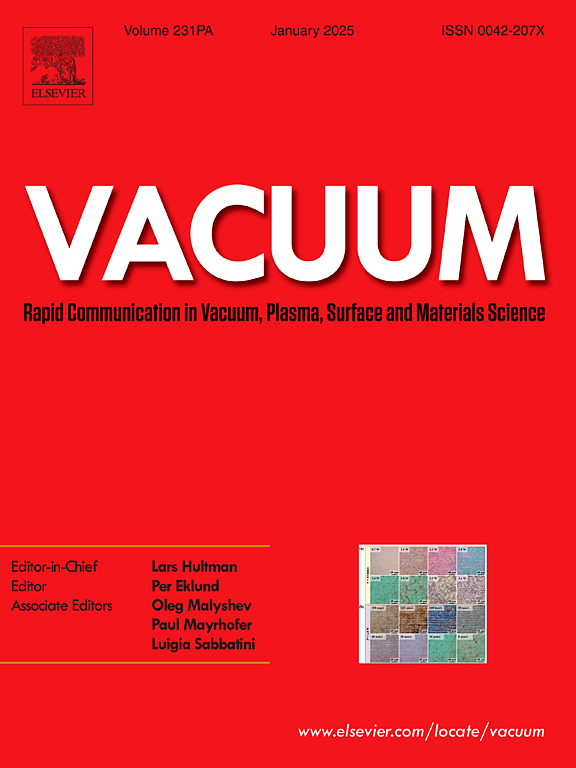Thermodynamic modelling and working characteristic analysis of claw vacuum pumps with a particular mixing process
IF 3.8
2区 材料科学
Q2 MATERIALS SCIENCE, MULTIDISCIPLINARY
引用次数: 0
Abstract
The claw vacuum pump only relies on a pair of intermeshing claw rotors to produce an internal compression process, so it exhibits many distinct advantages and plays an important role in vacuum application field. Different from other positive displacement vacuum pumps or compressors, the claw vacuum pump contains a unique and inevitable mixing process in its working process due to the existence of the carryover formed by two claw rotors. To reveal the mechanism of the mixing process, this paper established a thermodynamic model of the claw vacuum pump to describe gas mixing process among multiple working chambers. An indicated power diagram, called p-V diagram, of the claw vacuum pump including the suction, mixing, compression and discharge processes was obtained and analyzed. Effects of the mixing process on the working characteristics in terms of the compression ratio, indicated power and discharge temperature of the claw vacuum pump were discussed. It is found that the mixing process includes an over-compression process of the carryover and an expansion process before the suction process, and the mixing process leads to the reduction of the adiabatic efficiency and the increase of the indicated power. Meanwhile, it increases the gas pressure by gas-mixing before the compression process, which increases the compression ratio. This study is of great significance for the design of claw vacuum pumps.
特定混合过程的爪式真空泵热力学建模及工作特性分析
爪式真空泵仅依靠一对相互啮合的爪式转子产生内压缩过程,因此具有许多明显的优点,在真空应用领域发挥着重要作用。与其他容积式真空泵或压缩机不同,爪式真空泵在其工作过程中由于存在两个爪式转子形成的结转而包含独特的、不可避免的混合过程。为了揭示混合过程的机理,本文建立了爪式真空泵的热力学模型来描述多个工作腔间的气体混合过程。得到并分析了爪式真空泵的吸、混、压、排四个过程的指示功率图p-V图。讨论了混合工艺对爪式真空泵压缩比、指示功率和排气温度等工作特性的影响。研究发现,混合过程包括吸力过程之前的过压缩过程和膨胀过程,混合过程导致绝热效率降低和指示功率增加。同时,在压缩前通过气体混合提高了气体压力,从而提高了压缩比。该研究对爪式真空泵的设计具有重要意义。
本文章由计算机程序翻译,如有差异,请以英文原文为准。
求助全文
约1分钟内获得全文
求助全文
来源期刊

Vacuum
工程技术-材料科学:综合
CiteScore
6.80
自引率
17.50%
发文量
0
审稿时长
34 days
期刊介绍:
Vacuum is an international rapid publications journal with a focus on short communication. All papers are peer-reviewed, with the review process for short communication geared towards very fast turnaround times. The journal also published full research papers, thematic issues and selected papers from leading conferences.
A report in Vacuum should represent a major advance in an area that involves a controlled environment at pressures of one atmosphere or below.
The scope of the journal includes:
1. Vacuum; original developments in vacuum pumping and instrumentation, vacuum measurement, vacuum gas dynamics, gas-surface interactions, surface treatment for UHV applications and low outgassing, vacuum melting, sintering, and vacuum metrology. Technology and solutions for large-scale facilities (e.g., particle accelerators and fusion devices). New instrumentation ( e.g., detectors and electron microscopes).
2. Plasma science; advances in PVD, CVD, plasma-assisted CVD, ion sources, deposition processes and analysis.
3. Surface science; surface engineering, surface chemistry, surface analysis, crystal growth, ion-surface interactions and etching, nanometer-scale processing, surface modification.
4. Materials science; novel functional or structural materials. Metals, ceramics, and polymers. Experiments, simulations, and modelling for understanding structure-property relationships. Thin films and coatings. Nanostructures and ion implantation.
 求助内容:
求助内容: 应助结果提醒方式:
应助结果提醒方式:


